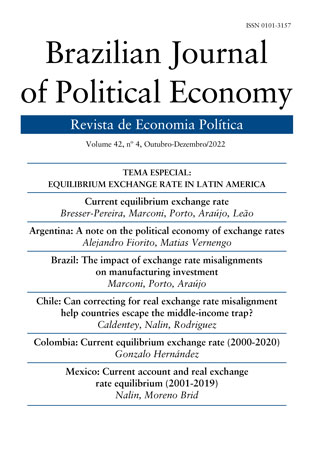Current equilibrium exchange rate: methodology and estimations for Latin American countries
Abstract
This paper proposes a methodology for the estimation of the current account
equilibrium exchange rate – the exchange rate that guarantees the intertemporal current
account equilibrium for a country. Moreover, the methodology is tested throughout
appropriate econometric technics (VECM Models) for Argentina, Brazil, Chile, and
Colombia, using quarterly data from around 2000 (according to data availability for each
country) to 2020. The model includes both long-term structural variables such as terms of
trade, goods and service trade as percentage of GDP and GDP per capita as well short term
policy variables such as interest rate differential and EMBI plus. Apart from proposing an
innovative methodology for estimating the current account equilibrium exchange rate, the
paper brings important insights in terms of chronicle and cyclical appreciation (depreciation)
of the exchange rate in LA countries. In addition, it shows high correlation between the
exchange rate negative (positive) misalignments and the current account deficits (surpluses)
in the countries analyzed.
JEL Classification: F30; F31; F4.
Keywords: Equilibrium exchange rate current account new developmentalism VEC Model

